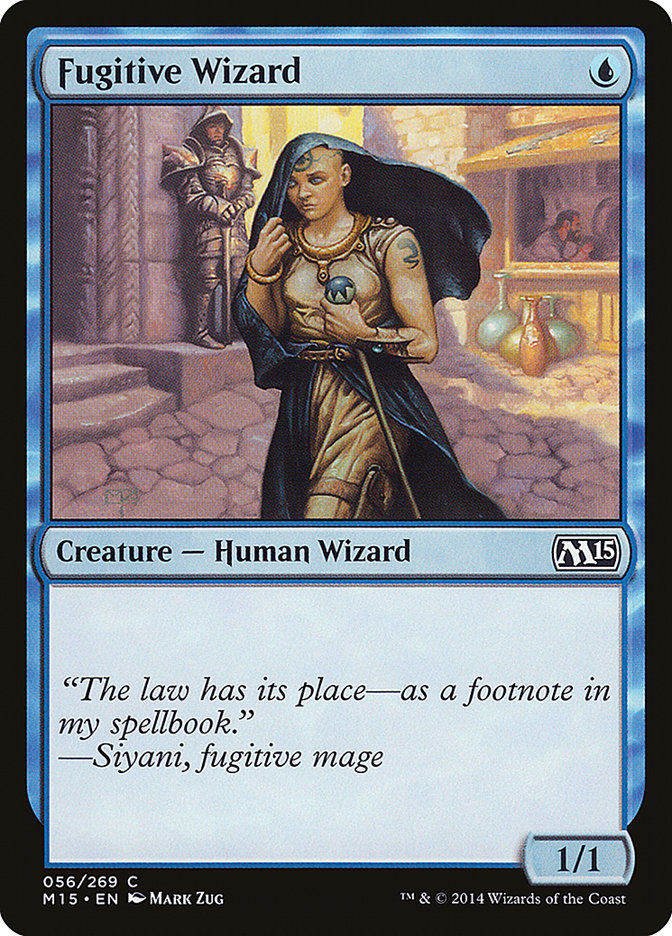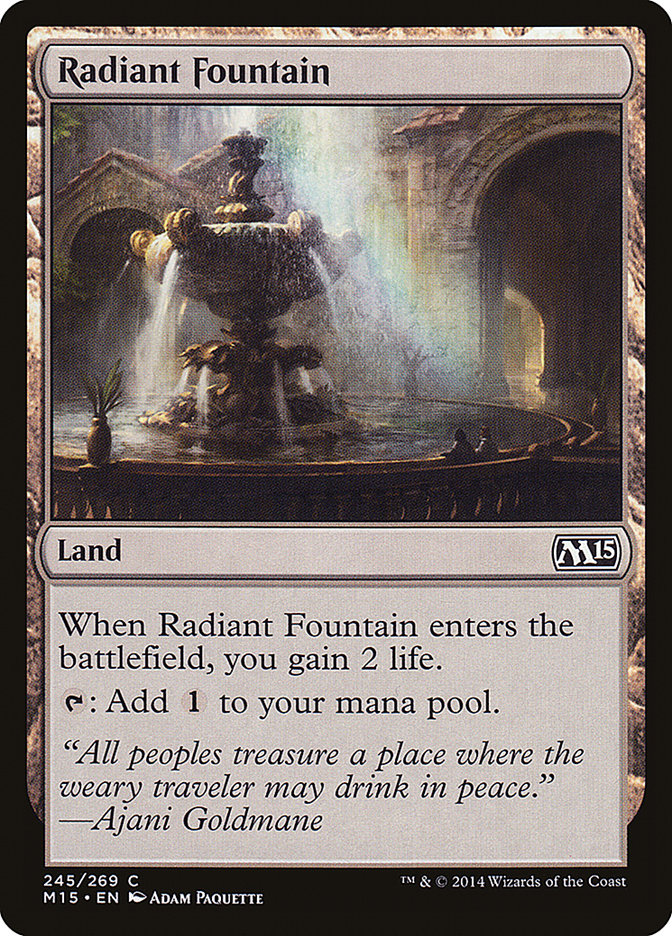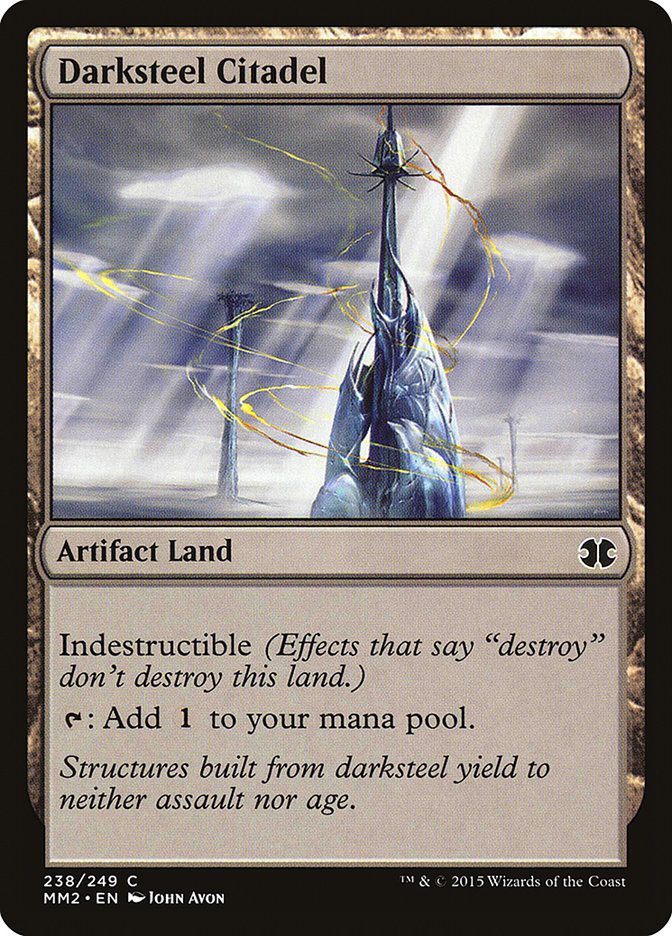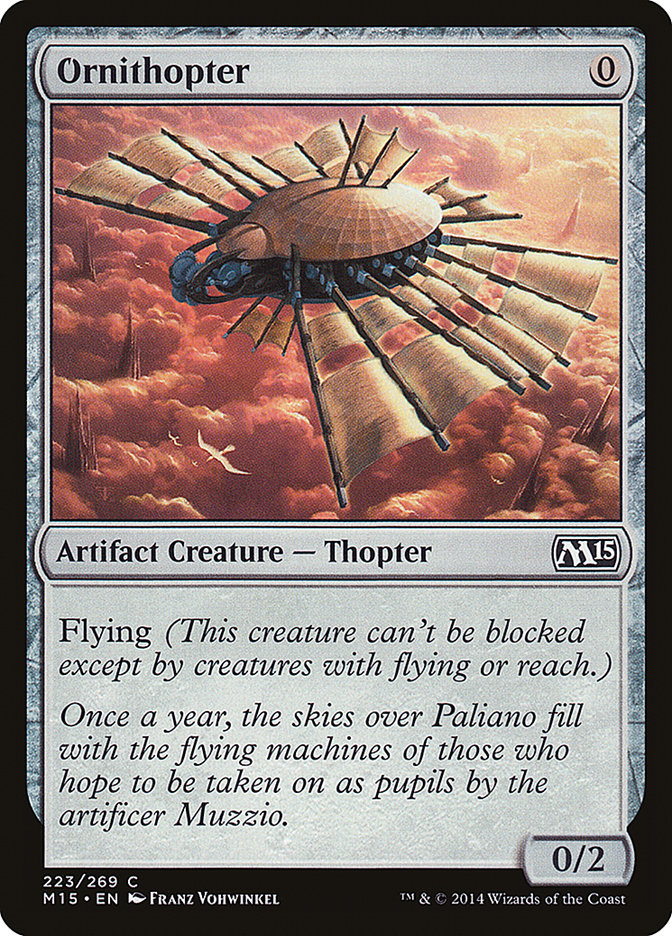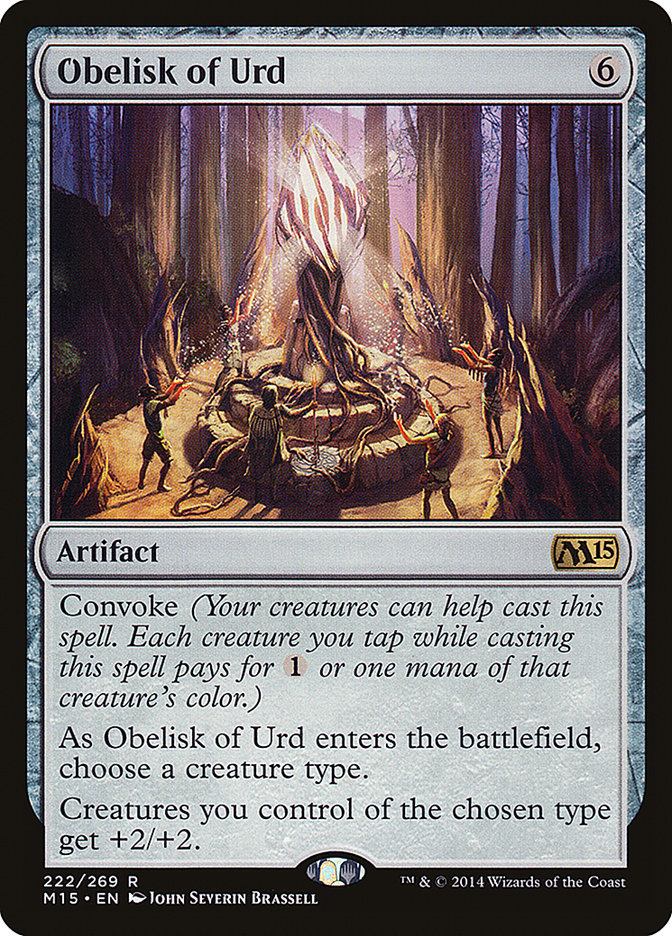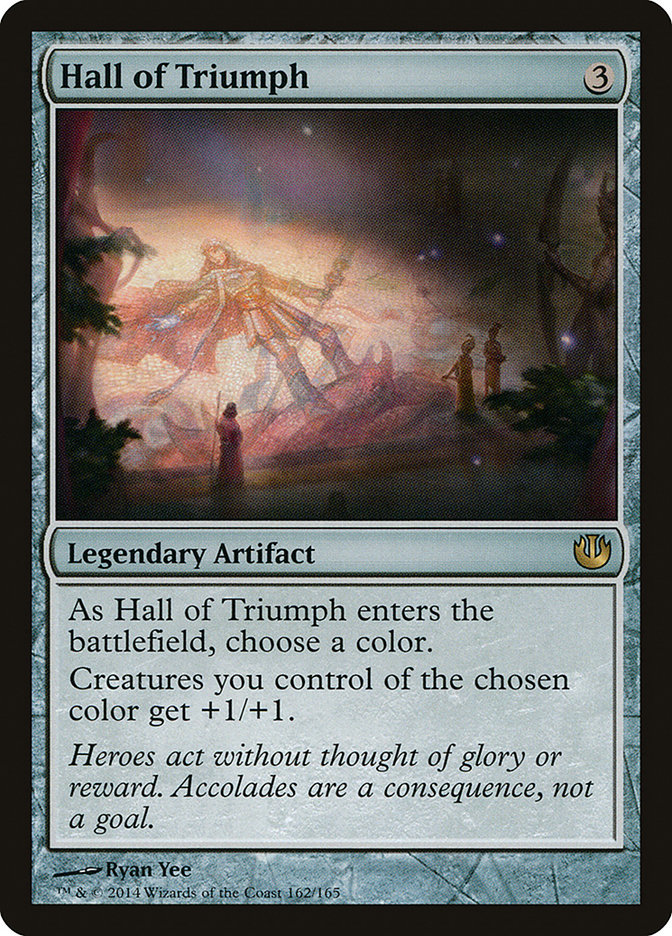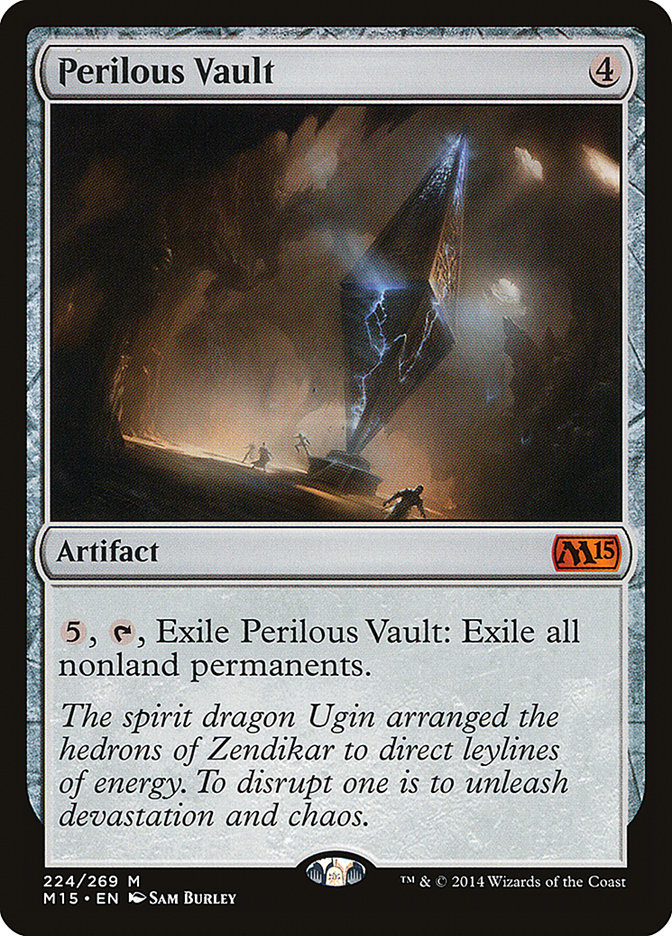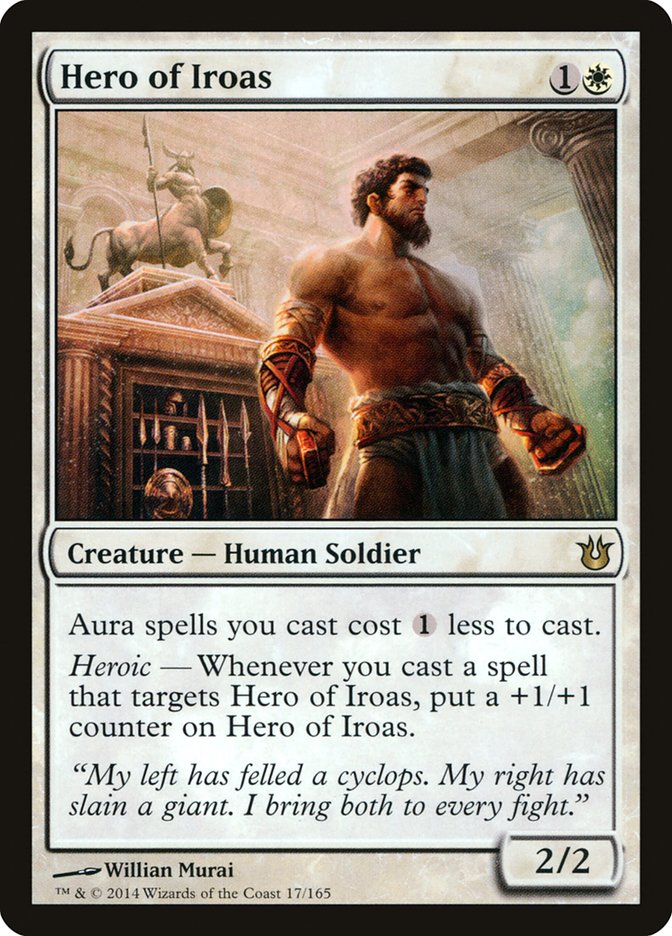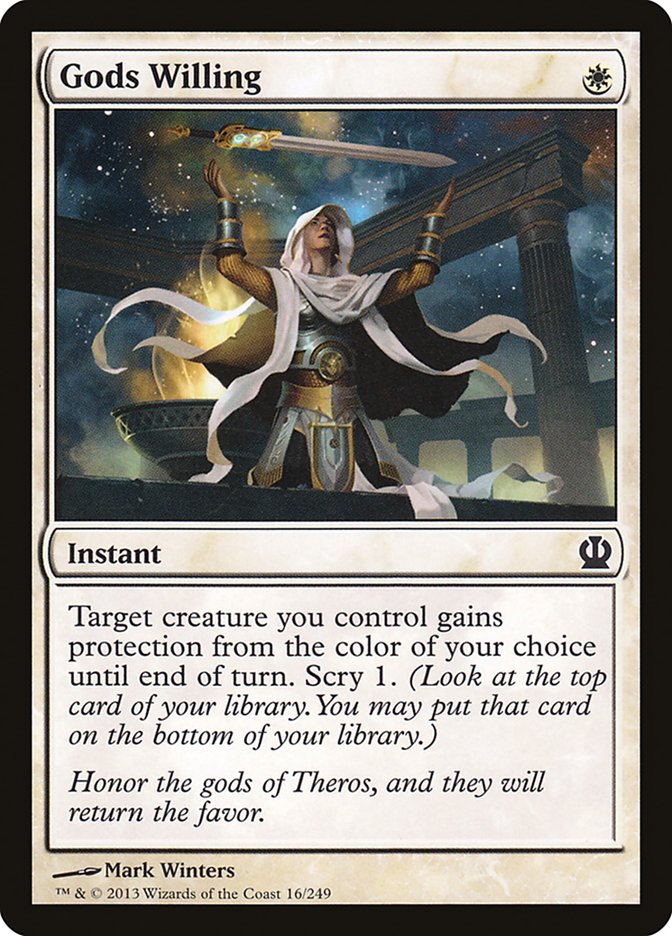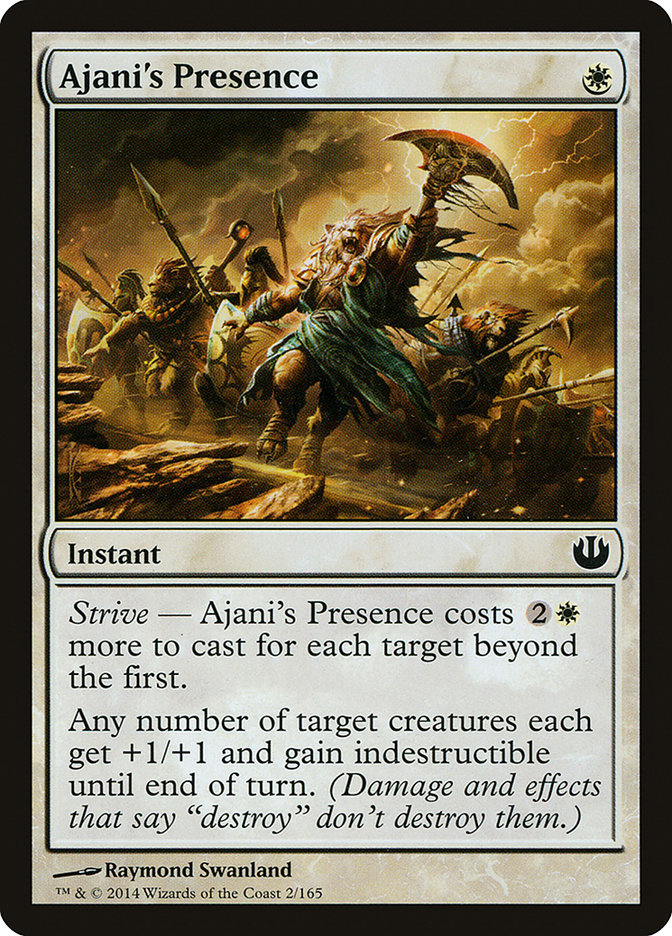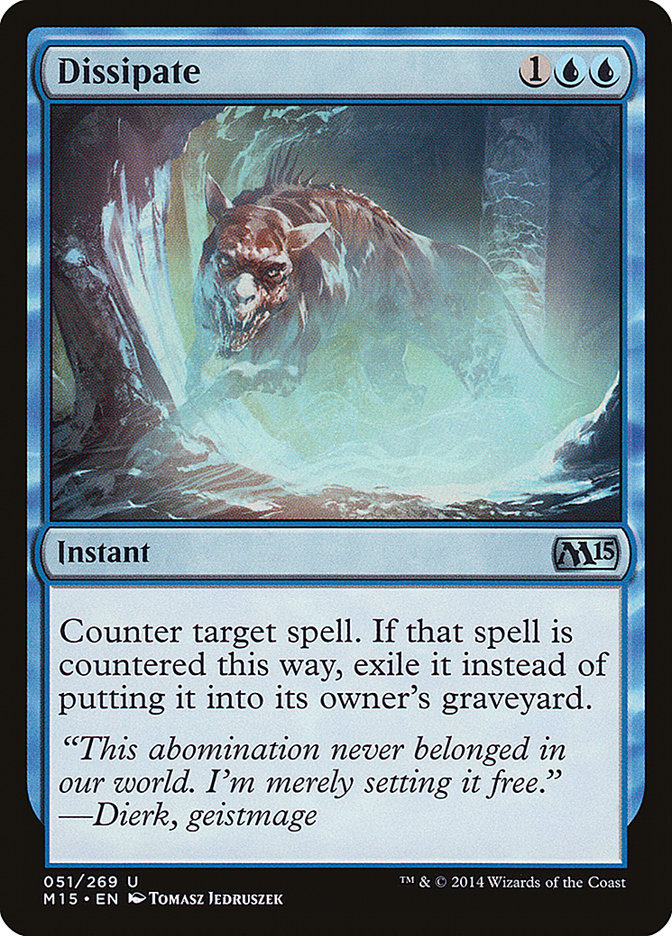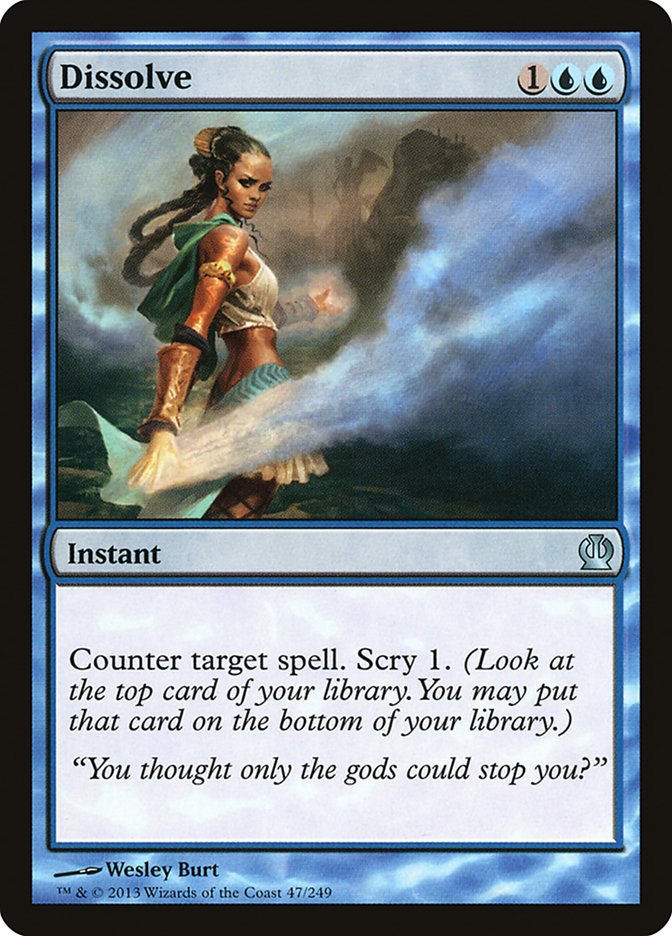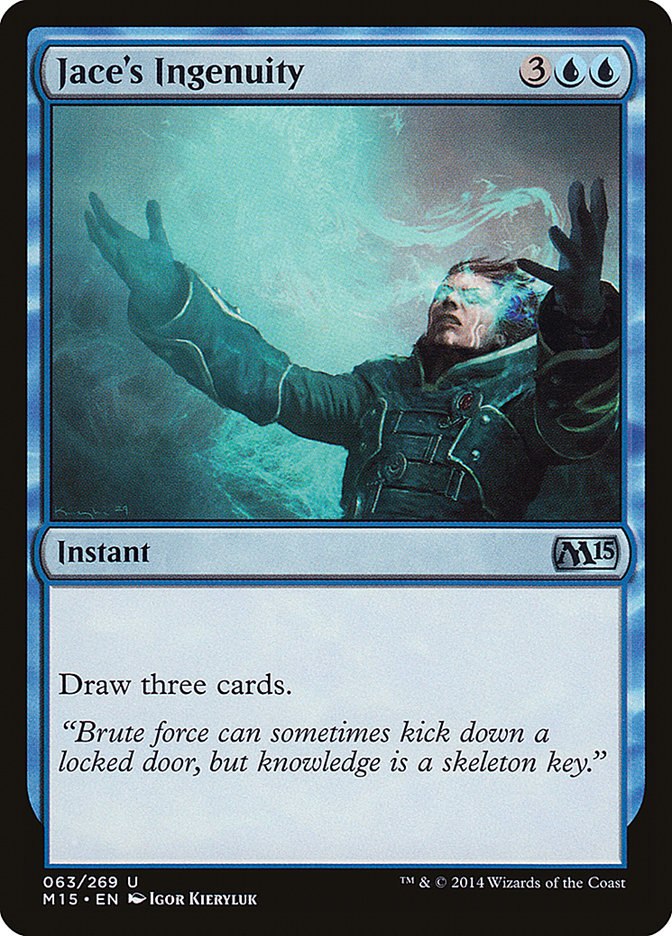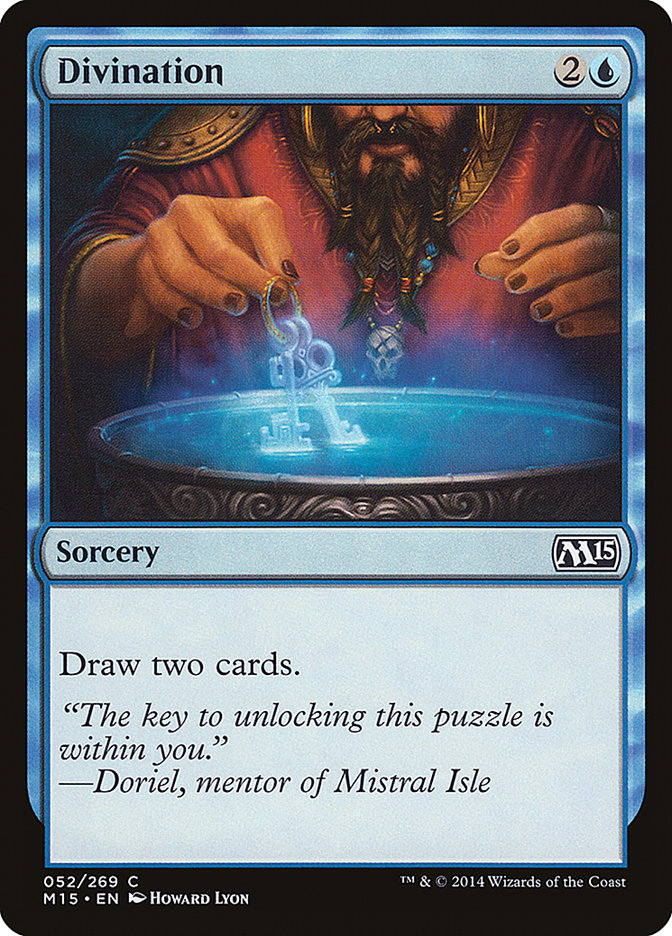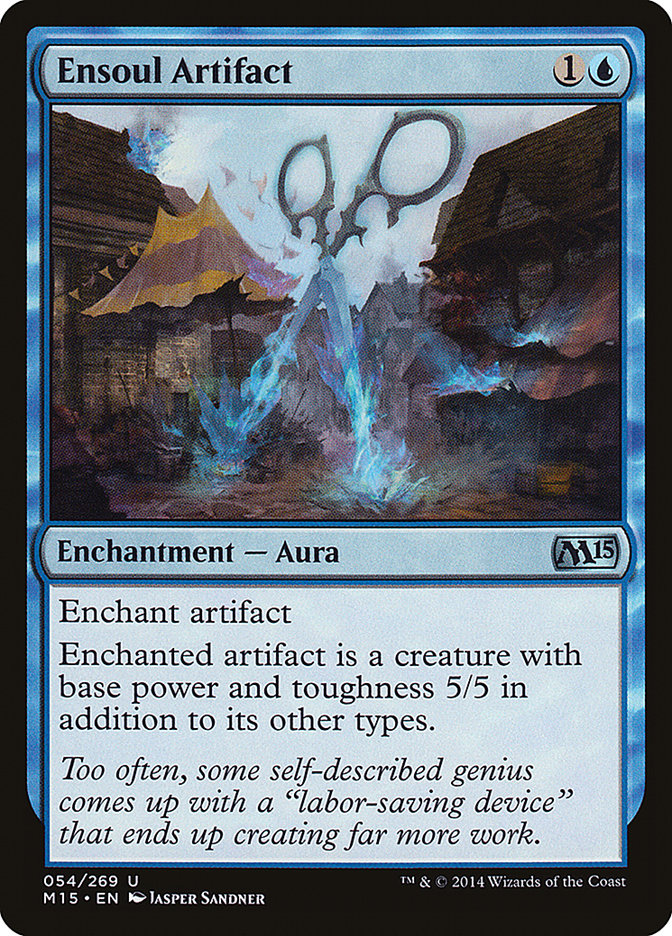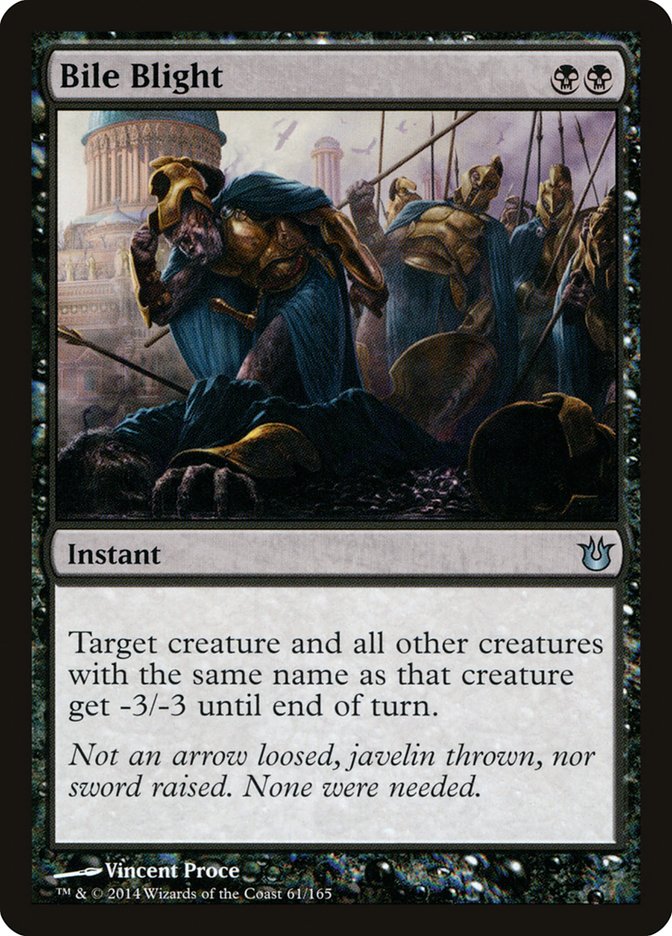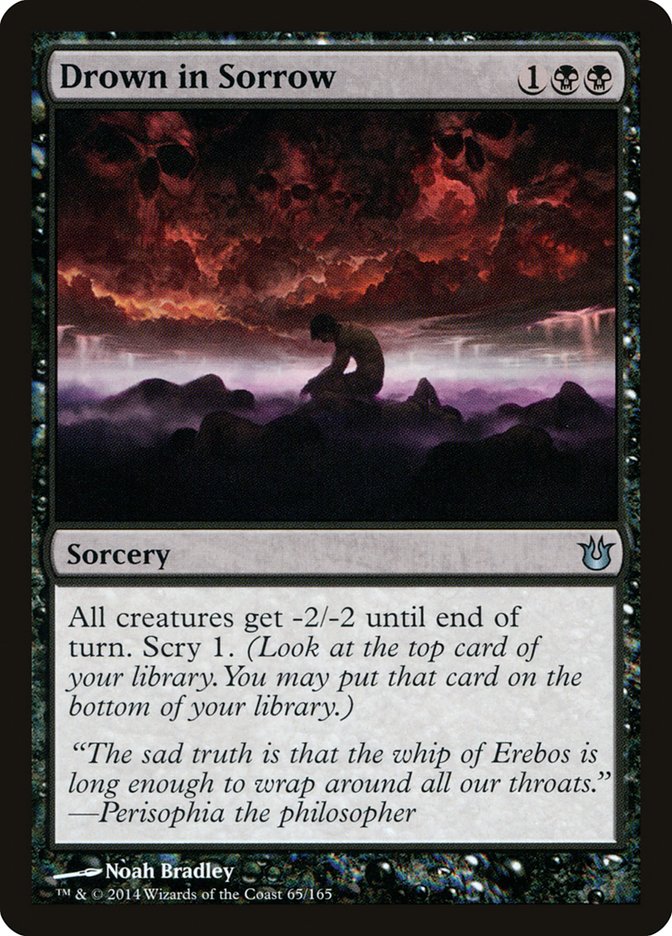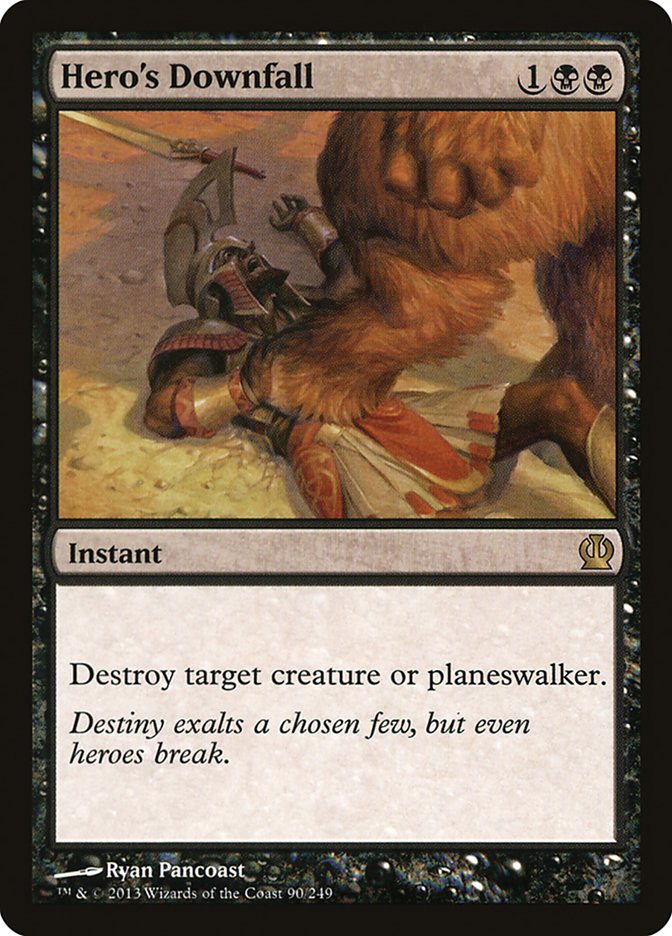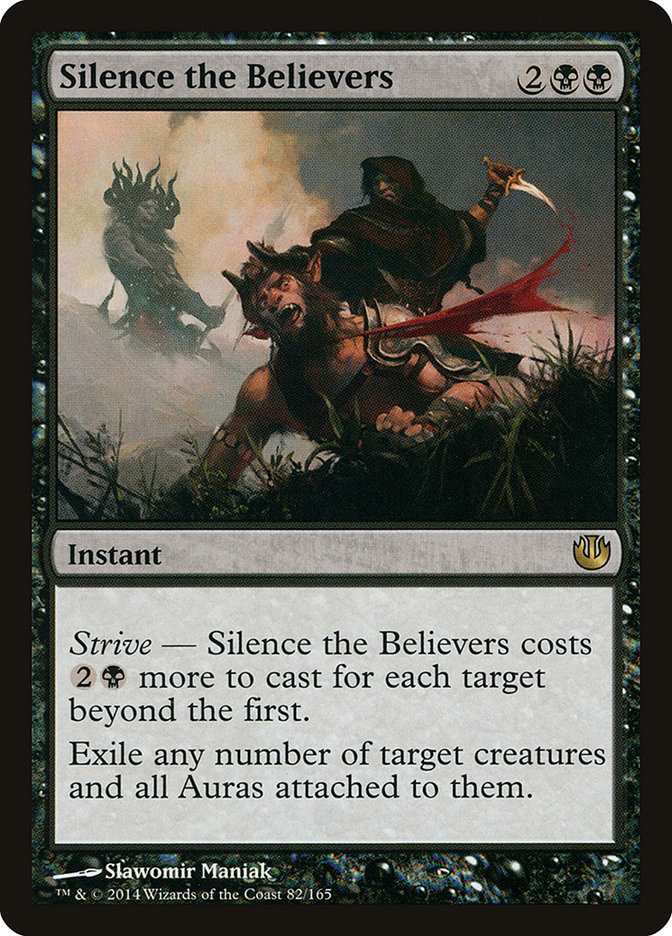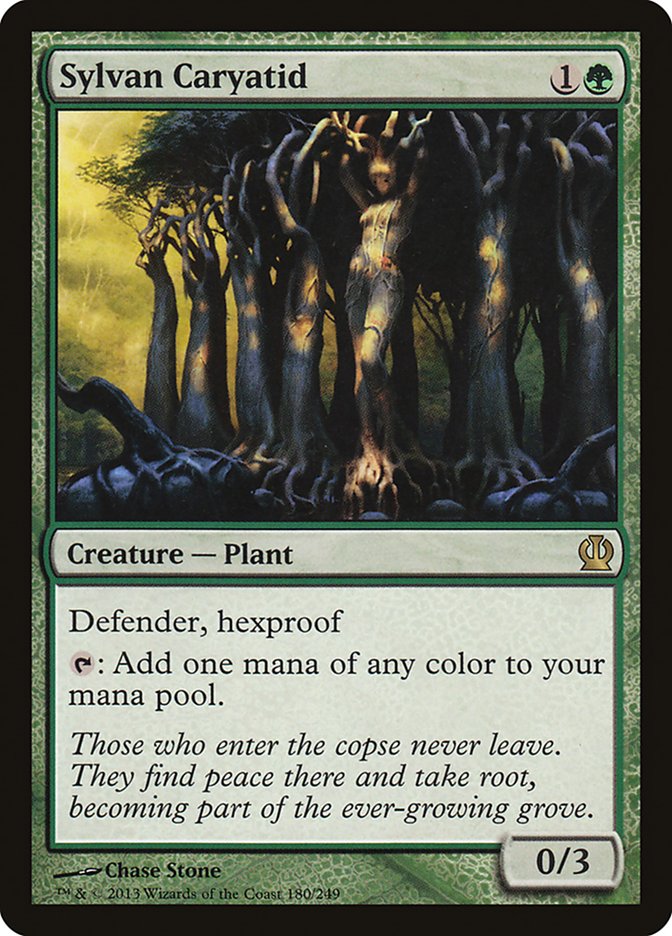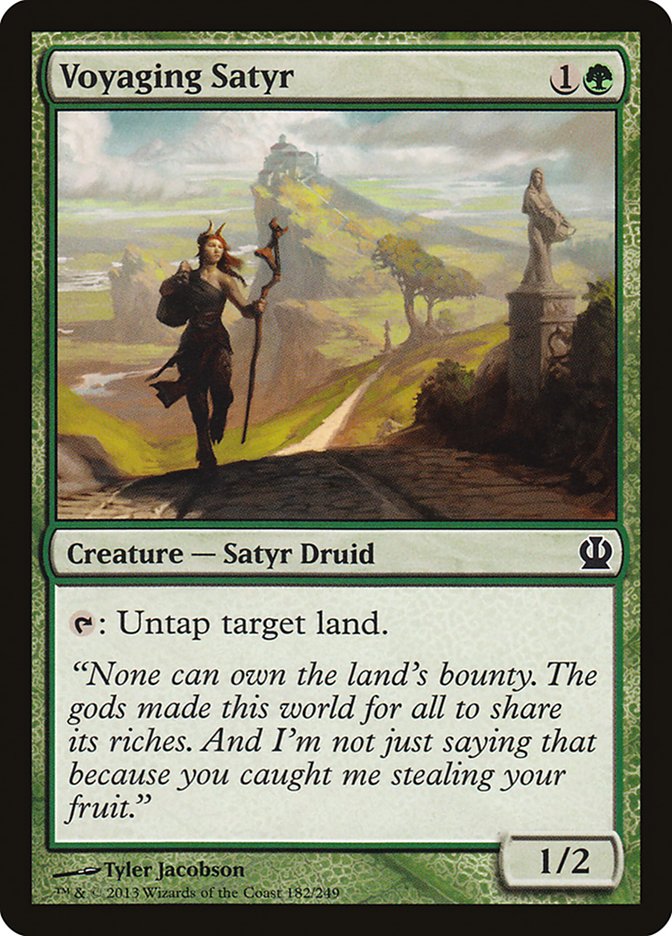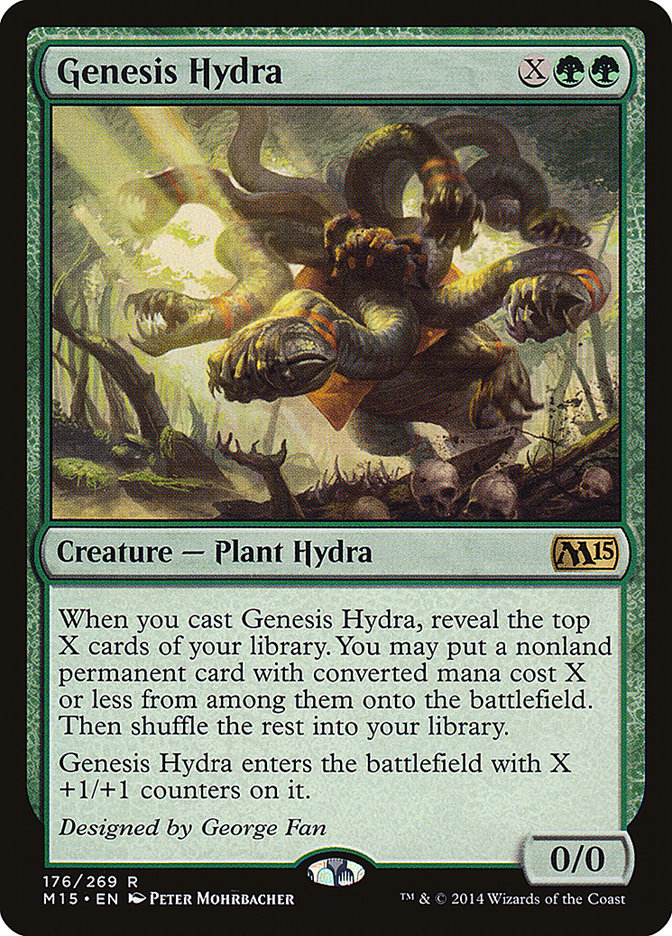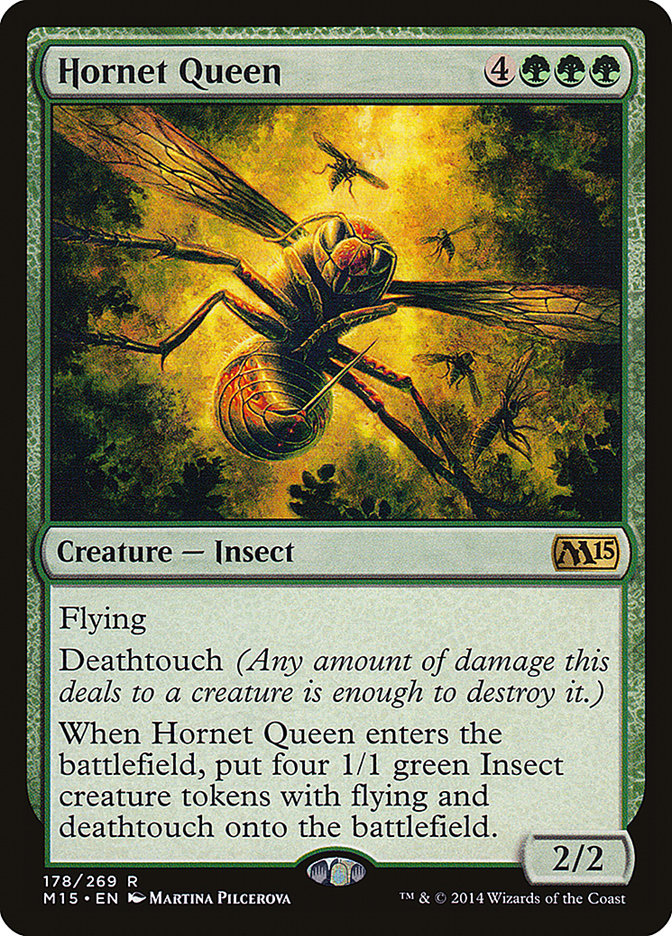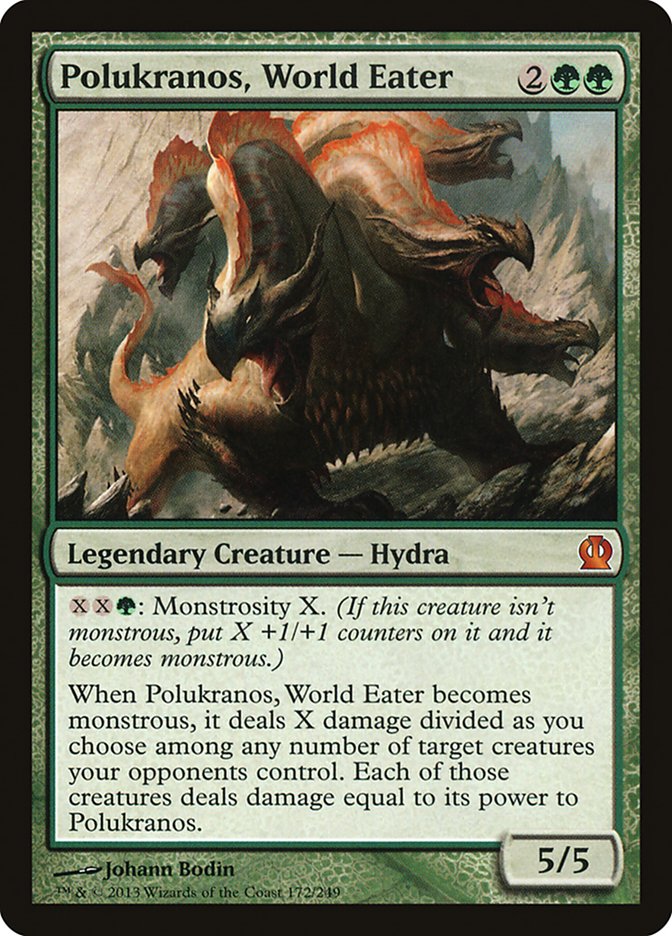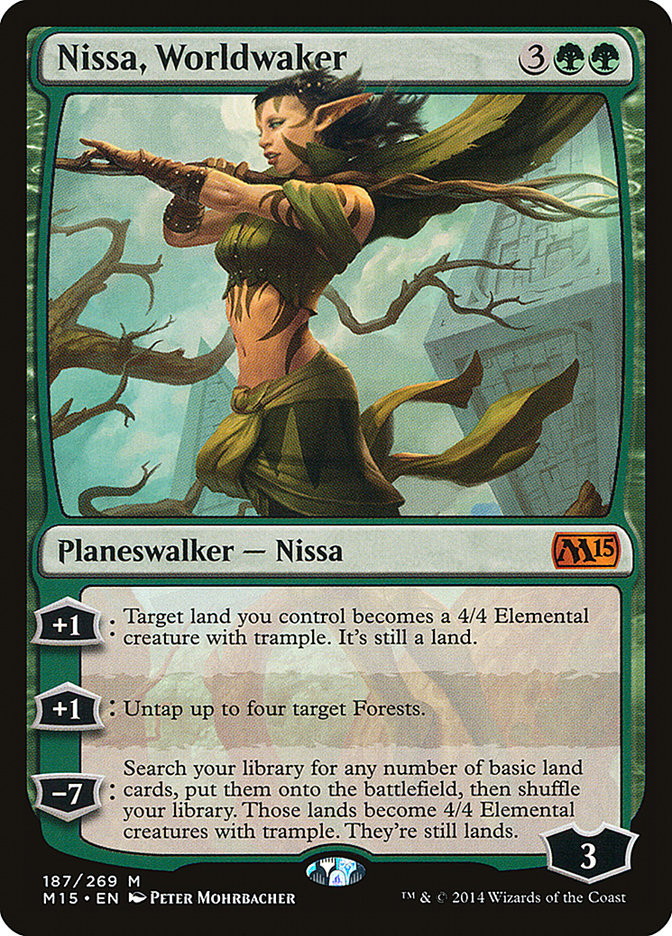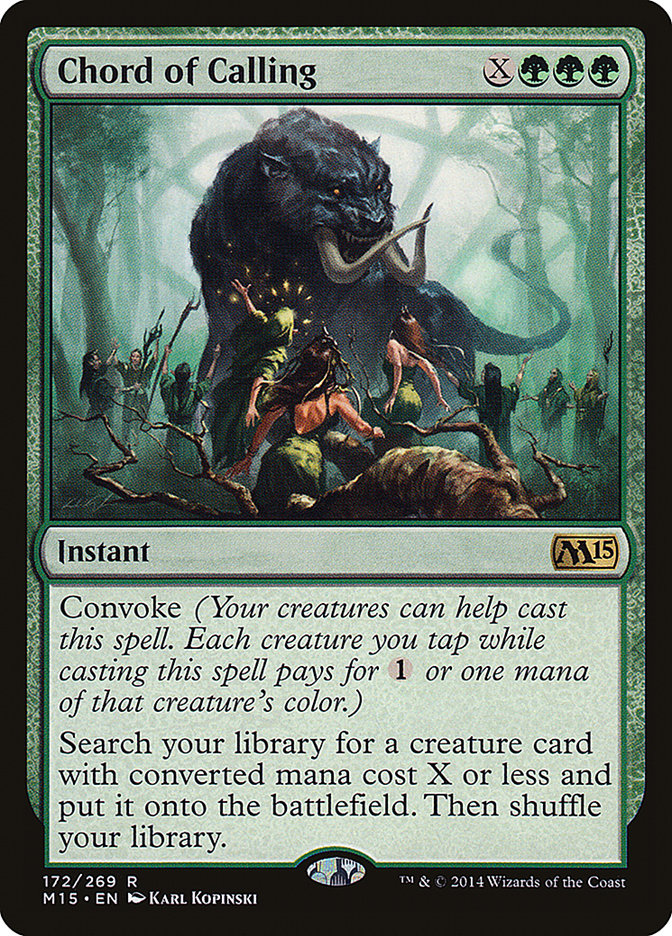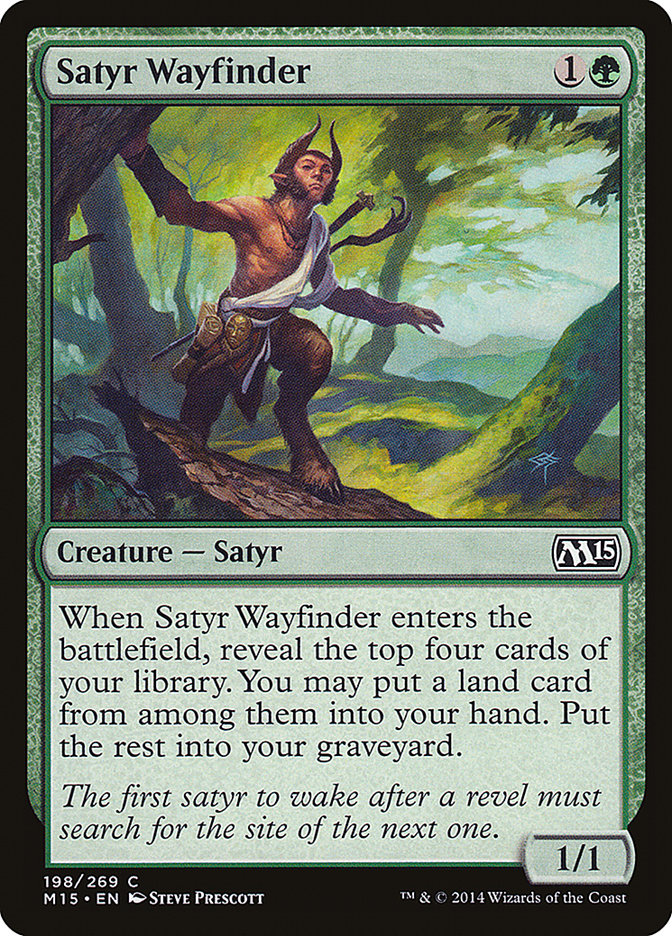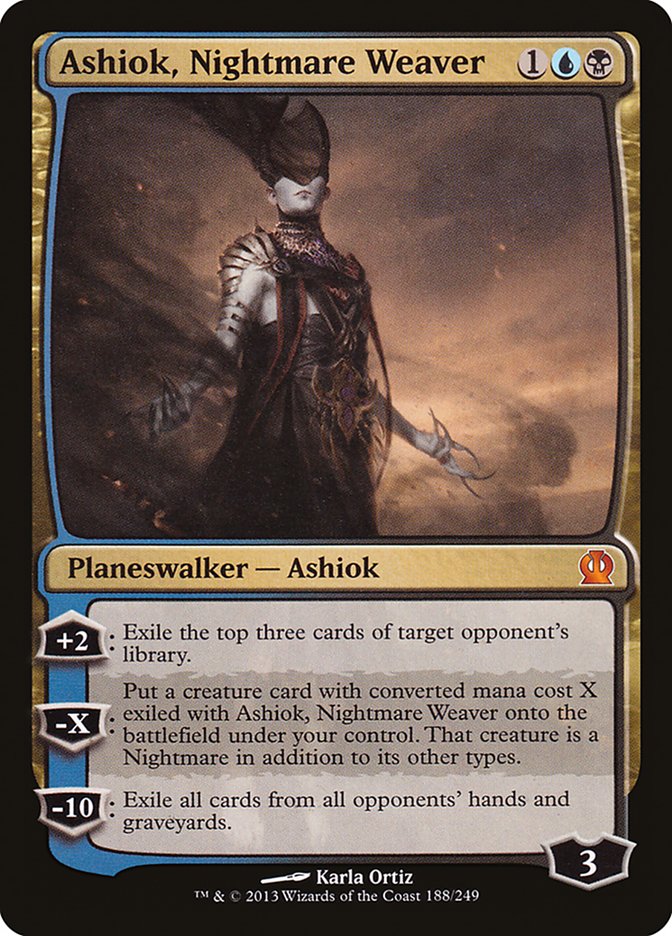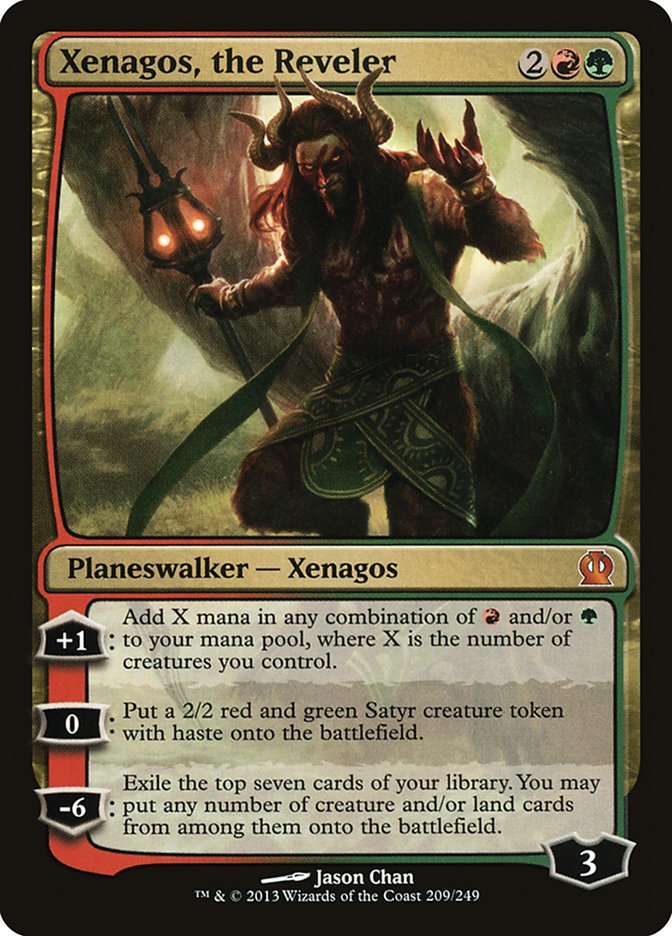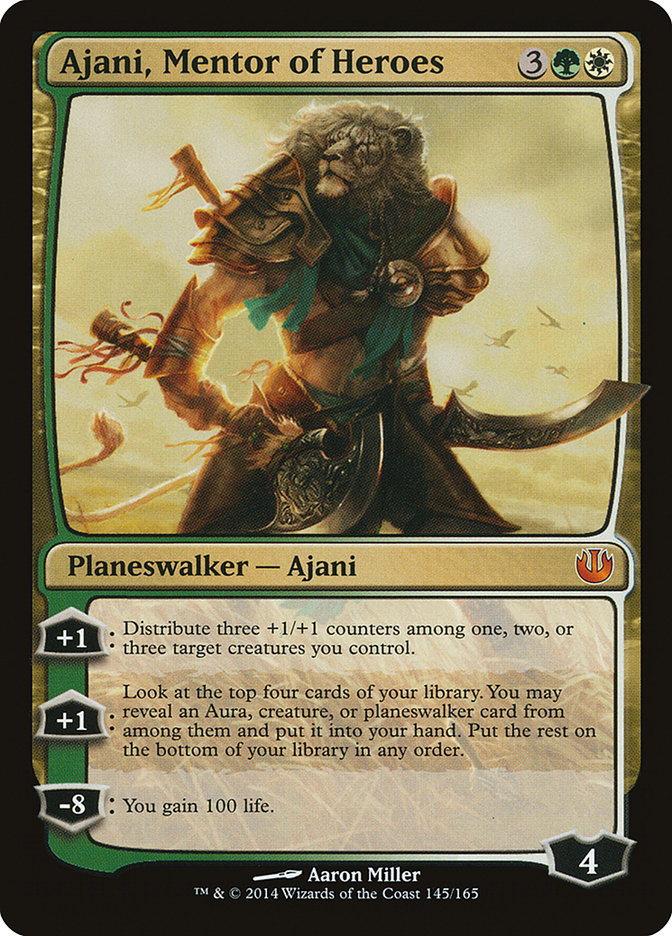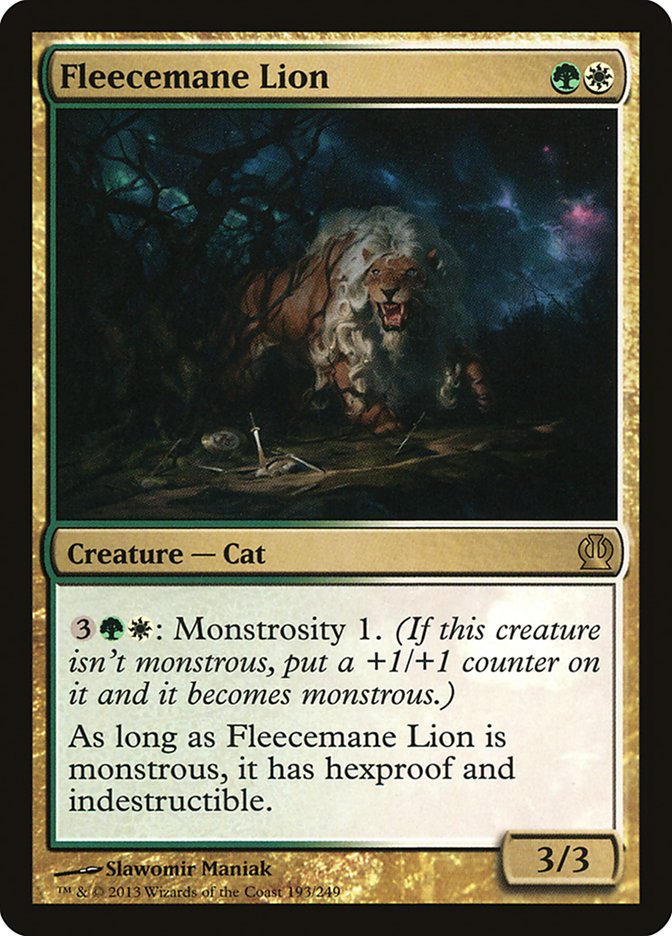For years now, Standard has been marked by change. The smallest changes come with the introduction of a new set in a block where all we’re doing is adding.
Then, of course, come the big changes, where cards depart by the truckload. That happens every time a new block comes in, and the old block leaves
to make room for it.
That’s about to happen again now that Battle for Zendikar is right around the corner.
For the Prerelease I’ll be heading, as I always do, to Misty Mountain Games in Madison. I don’t
have it in me any more to do their Friday night “Midnight” release, but come Saturday, expect to see me getting my first in-person taste of the cards. A
week later, and we’ll have the official release of the set, which means goodbye to a lot of cards.
It means goodbye to over 800 cards in Standard. That’s an incredible amount of cards.
The last time this happened, the card I was sad to see go was easy to identify:
Besides all of the cards we care about, there are always plenty of cards that disappear that we don’t care about. Few people will weep for the loss of this
card, for example:
This isn’t an exhaustive list of every one of those 800 cards that are leaving, but it is an overview of the most significant ones. Let’s take a look,
because things are about to change in Standard in fundamental ways.
Lands
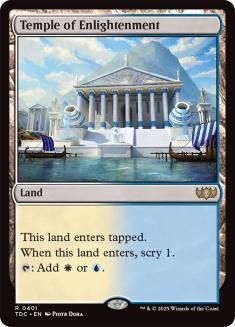
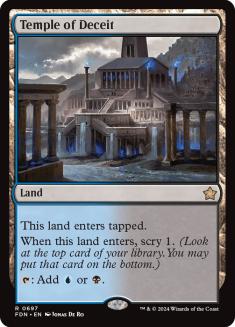
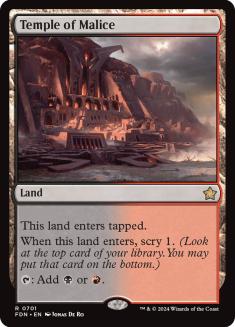
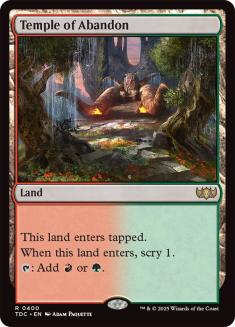
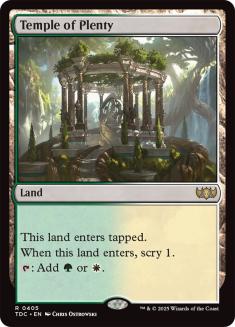

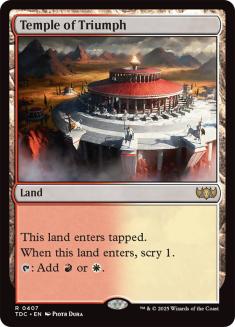
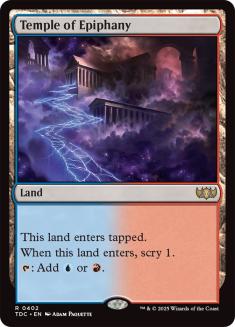
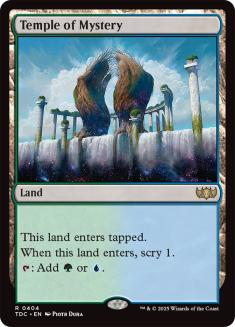
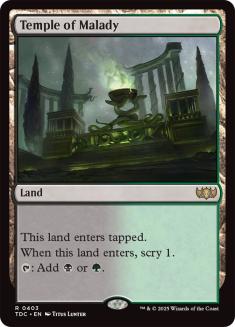
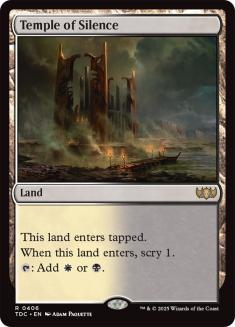

More lands than just the Temples are going to be lost, but those are unquestionably going to be the most significant. It simply cannot be understated just
how impactful these cards are in helping decks to ‘cheat’ on their mana. Some of the aggressive midrange strategies, like Abzan Aggro, for example, have
long relied on Temples as a means of finding their colors as well as running high mana counts and yet reliably not flooding.
When we look at decks like my U/B Control deck from Pro Tour Dragons of Tarkir, it was much the same principal, but in reverse, with a deck that should
rightfully be running 28 or more lands able to run less, counting on Temples to find the extra land when you need it, and to ditch that extraneous land
when you don’t.
For basically all of these decks, that subtle ability of scrying just makes a huge difference. It isn’t truly like going up an extra card when you
get rid of something you don’t need or can’t use, but it really does feel like that is what is happening.
Of course, more is leaving than that.
It doesn’t see play in many decks, but the power of Radiant Fountain for the control decks was huge. Sometimes, simply putting one of these onto the
battlefield would be enough to win a game for those decks, and the more aggressive deck pilots were often put on tilt by the dropping of the third of this
card. This card was good enough that, under Chapin’s encouragement, Team Ultra PRO nearly put one in the 75 of the Mono-Red Aggro deck that most of the
team played at Pro Tour Magic Origins!
Sorry, Thopter Spy Network, your days of free activations are now over. One of the most powerful things about that card was being able to merely cast it, and then to start reaping the benefits of TSN. Now, you have to do things the fair way. It’s true that we’ll also lose the ability to
make Darksteel Citadel a Scissors, but Ensoul Artifact is also a part of this rotation, so that isn’t nearly as significant to comment on for the loss of
Citadel as is Thopter Spy Network, which is sticking around.
Artifacts
Speaking of Artifacts and Scissors, Darksteel Citadel is joined by another free card that is gone:
There are enough ways to pump up artifacts and colorless cards that losing Ornithopter really does feel like it is meaningful despite the apologies that
Wizards of the Coast once printed in their rulebooks to all those killed by an Ornithopter. This might only really impact one archetype that we’re
currently seeing, but Ornithopter has long been a card that has seen surprising use as a cog in a bigger machine; now we’ll never get a chance to see if a
different machine existed.
Pumping up that swarm is going to have to be done in new ways without these two cards. Often this was a fairly Goblin-oriented way to go about things, but
it was pretty common to see one or the other of these cards running around in red circles. Martin Dang, for example, ran two of these in the sideboard of
his Pro Tour Dragons of Tarkir winning deck. Goodbye, colorless pump!
While I may have been the biggest booster for Perilous Vault out there, it certainly found its way into Esper Dragons and other decks as a catch-all for
nearly anything that wasn’t a Nissa, Worldwaker land. While we still have Ugin, the Spirit Dragon to do some of the same work, this card’s ability to take
care of practically everything can’t be easily replicated.
White
It feels like there are two distinct categories in the losses to white: the slow cards, and the fast ones.
If you were one of those people who liked to take over a game, you’ve just lost some big weapons. Say what you will about either the Magic Origins
Gideon or the Battle for Zendikar Gideon, they aren’t as powerful a controlling card as Elspeth, Sun’s Champion (nor, from the other side, are
they as successful as finishers). Banishing Light and Last Breath are a part of the package of white spells that helped Jim Davis and Michael Bernat do so
well in Milwaukee at the recent Open Series with U/W Control; now all of those tools are gone.
Heroic, as an archetype of whatever color, is dead. Here is one I don’t mind sticking a fork into, though I’m sure that Tom Ross and many other good folk
will feel strongly in the other direction.
Blue
Did you enjoy your time as a control player? It might still exist, but there are some casualties:
One of the things that blue does have going for it, though, is that all of these cards are going to have analogous choices that can do the same sort of
job, at least somewhat. The loss of the pure card-drawing power that blue had isn’t completely gone; Treasure Cruise and Dig Through Time are still here,
and Jace will certainly be making an appearance. This downturn in blue’s power seems to be joined by a great downturn in the power of all the
decks, so this isn’t an insurmountable thing.
Of course, when you want a Scissors, Rock and Paper won’t do. There is nothing that really replaces this card for what it is doing.
Black
If you want to see a color that really got gutted, check this out:
These cards do a kind of powerful work that truly doesn’t get replaced with the new sets. I think we’ll all agree that the awaken version of Hero’s
Downfall, Ruinous Path, is awesome, but sorcery is not instant, and Rising Miasma’s four casting cost is not Drown in Sorrow’s three. As for Thoughtseize,
well, Duress, sorry–you are no Thoughtseize.
There are more cards now that these few have departed, but this represents something bigger: a fundamental shift away from the utter power of black removal
as a catch-all. Thoughtseize is one of those cards that has long been a huge pain for many players, where you’d often see people’s plans fall apart in the
face of Abzan because of a timely Thoughtseize.
I, for one, won’t mind seeing this one go.
Red
On the other side of the spectrum from black, which loses a few cornerstone cards, we have red, which just feels like it flew off of a cliff.
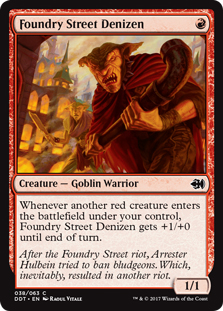
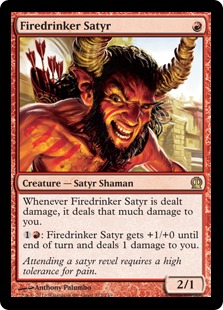
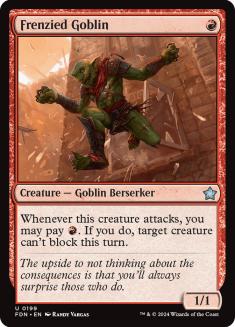
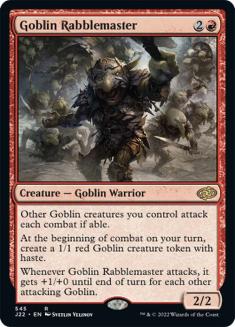

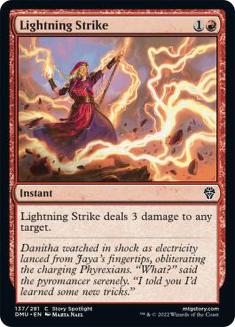
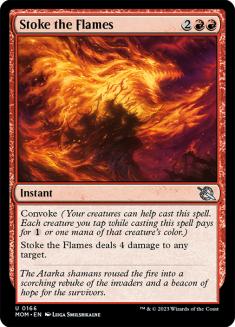
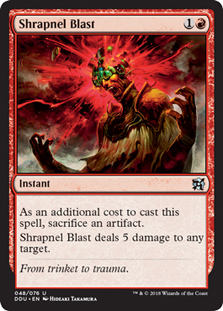
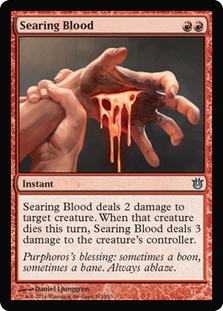

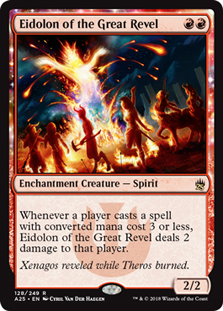
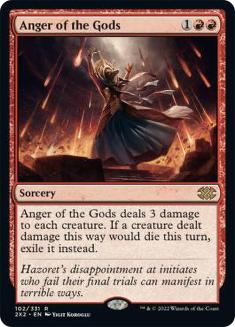
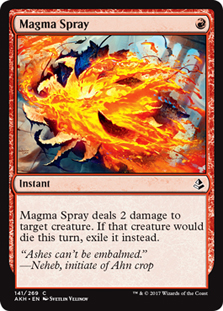
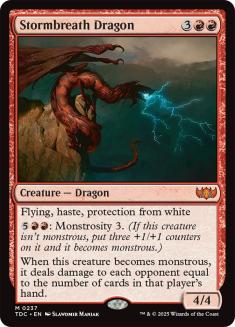

These cards represent three important parts of red: the hit it took on swarming attacks, the devastating loss of burn (especially cheap burn), and the loss
of the more controlling cards.
There are cheap creatures you can use, but losing Foundry Street Denizen takes a huge kick out of the token decks. There isn’t really a card that hits as
quickly and hard as this one. Rabblemaster, the cornerstone of the most successful red deck at Pro Tour M15, is basically a card without replacement, a
veritable One Man Crowd (thanks, J.B.).
The cheap burn is now Wild Slash and cards that are narrow or start to cost three mana. Stoke the Flames has always been an incredible finisher, and
convoke was a huge part of the reason why. Losing Eidolon of the Great Revel takes a huge leg out from any burn-heavy strategy.
Finally, the cards that can take red into a more controlling (or at least more midrange) space are gone. Stormbreath Dragon and Thunderbreak Regent used to
be besties, but now the Regent is going to have to find someone new to hang out with. Anger of the Gods was an incredible control spell. Magma Spray has
gone, leaving Hangarback Walker all the more devastating (especially since Revoke Existence is also gone).
These are some huge losses.
Green
Green has some similarly gutting losses:
Mana, be gone. The biggest loss of this grouping is probably Courser of Kruphix, if only for the absurd level of power of that card, though Elvish Mystic
is right behind it. Courser, like Goblin Rabblemaster in red, simply doesn’t have a replacement; as much as Nissa is great, it doesn’t do the same job as
Courser. Elvish Mystic, as absurdly cheap ramp, simply does a job with power that puts it in the land of Legacy and Modern; without it and the other mana,
much like Heroic, Green Devotion is dead with the enablers simply out of the picture.
The payoffs for that archetype are also gone:
Not all of these cards were unique to Green Devotion, but they were certainly regular facets to that deck more than most others, especially if we’re
talking 60 cards as opposed to 75.
In addition, a few tools that helped out numerous decks have disappeared:
Of the two, Satyr Wayfinder is probably the bigger loss, cutting out the powerful interaction with delve that we’ve been used to as well as hurting all of
the reanimation strategies. Chord was way less popular but still powerful in its own right. Collected Company, powerful though it is, has lost some major
helpers (as has Deathmist Raptor).
Gold
Here, we see the domain of mostly planeswalkers, though with one extra card to discuss:
All of the planeswalkers above have played significant roles in Standard. Even Ajani, Mentor of Heroes, the least acclaimed of the three, has been a big
part of helping to crush opponents in a grinding matchup. Ashiok has been either the cornerstone of U/B Control in winning or a powerful sideboard card for
Esper Dragons, and essentially has no similar card stepping up to replace it. Xenagos, the Reveler, by itself, can end the game in spectacular fashion that
is reminiscent of Goblin Rabblemaster.
And, of course, all of these probably pale to the loss of Fleecemane Lion, a cornerstone to Abzan Aggro and a powerful tool in Abzan Midrange and Abzan
Control. 3/3 for two mana is an incredible rate, and the monstrous on the card is so significant, I included white and green mana in my U/B Control deck
just so I could make a monstrous Fleecemane Lion or three after stealing them with Ashiok, Nightmare Weaver.
Overview
Things are going to look very different indeed. Heroic strategies and Green Devotion are completely gone. Black, as a color, has lost its core, and all of
the many archetypes which relied upon the removal tools and Thoughtseize now have to rethink their approach. Hangarback Walker is a big winner, with many
of the cards that could help hold it down being removed from Standard. Red is going to have to rethink both how it goes about aggression and just what kind
of burn package it can include. Control of all types is going to have to go back to the drawing board as to how to take over a game.
It’s an exciting time. Traditionally, the big rotations have been the most useful to those people who can find the new ideas and make them work well soon
(leaving the truly great decks for later). I hope to have something awesome worked out for Pro Tour Battle for Zendikar.
In the meantime, I’ll hitMisty Mountain Games in Madison this weekend. If you’re in Madison, come
by and see me, and wherever you are, I hope you’re ready to say goodbye to the old, because it’s about to be time to say hello to the new!


